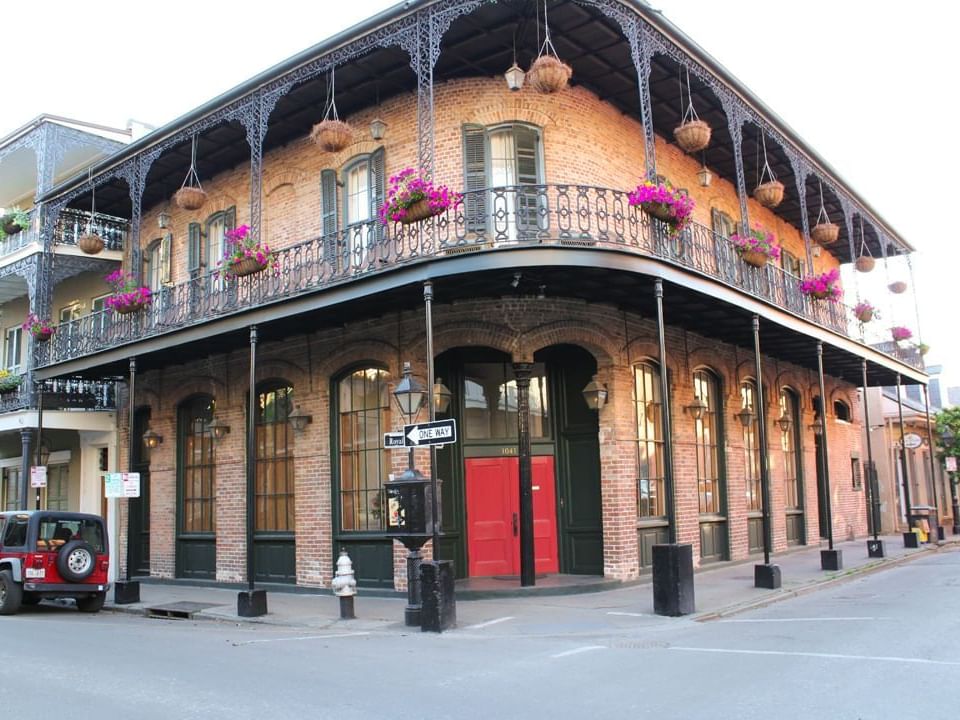Why Is New Orleans America’s Most European City?
There’s no doubt that New Orleans is full of an eclectic assortment of qualities that adds to its unique charm. Every year, millions of tourists visit the city to try the fabulous cuisine, experience the incredible architecture, and soak in the rich and dynamic culture. All of these elements have a few things in common, one of which is a distinctly European flair. This makes sense since the Big Easy is America’s most European city.
But why is there so much European influence in New Orleans? It stretches all the way back to before the city’s birth in 1718 when French colonists settled in the area, eventually establishing La Nouvelle-Orleans.
New France and the Birth of New Orleans
In the 1660s, the French began the colonization of certain North American territories, stretching from the Gulf of Mexico to Hudson Bay. This swath of land included what was soon known as the Louisiana Territory, which encompassed what is now multiple US states, including a large section of present-day Louisiana.
Attracted by the shipping possibilities near the Mississippi Delta, French settlers and Jean-Baptiste Le Moyne de Bienville founded New Orleans in 1718. Bienville hired engineers to create an 11 x 7 block of land that became the Vieux Carré, or French Quarter, naming all of the streets after various French Royalty and Catholic saints, and setting up his home, which is now the Custom House. By 1721, Bienville dubbed the city La Nouvelle-Orleans, in honor of the Duke of Orléans.
Spanish Influence in the Vieux Carré
While many of New Orleans’s traditions, foods, festivities, and customs are reminiscent of its French heritage, there is also a lot of Spanish influence throughout the city. Perhaps, most eminent in the beautiful architecture of the French Quarter.
In 1763, the Spanish Empire took over New Orleans after acquiring it from the French through the Treaty of Fontainebleau. It was a means to end the French and Indian War and keep the city out of the hands of the English. During the 40 years of Spanish rule, several fires destroyed much of the original French architecture in the city, and the Spanish rebuilt, providing the city with its impressive architecture.
The Louisiana Purchase
After about 40 years, Spain gave the Louisiana Territory back to France in the secret Treaty of San Ildefonso in 1800. However, Napoleon Bonaparte was facing several challenges during this time. He knew the British still wanted New Orleans, mainly due to its prime location as a port. However, he also had to address an impending slave revolt on what is now the Dominican Republic and Haiti. In the end, he decided to dispatch roughly 30,000 troops to the islands, leaving New Orleans defenseless against attack.
President Thomas Jefferson took this as an opportunity to negotiate a deal with the French government and purchased the Louisiana Territory for $15 million in 1803. The Louisiana Purchase gave the land and governing rights of the territory, including New Orleans, to the United States.
New Orleans Today
Today, the Big Easy retains much of its French and Spanish roots. French colonists were Catholic, and today, the religion is very prevalent in the city. New Orleans is also home to the oldest Catholic cathedral still in use in the United States, the stunning St. Louis Cathedral.
The “greatest free show on earth,” Mardi Gras, has strong European ties, starting in Rome and spreading to France and other countries. The French brought this festive celebration with them, along with their fabulous cuisine, which influences much of New Orleans’s food today.
The Cajun and Creole cultures in New Orleans celebrate many traditions and have their distinct cuisine, music, and more, all derived from French and other influences. These groups even speak their own languages, and when you listen, you’ll discover that Cajun is very close to French.
When you visit the French Quarter, you’ll find most of what makes the Crescent City so unique is thanks to European influence. From the city’s famous beignets to the historic French Market, and the charming boutique hotels, touches of Europe abound. In fact, you could say, visiting New Orleans is the perfect way to travel to Europe without having to go overseas.
